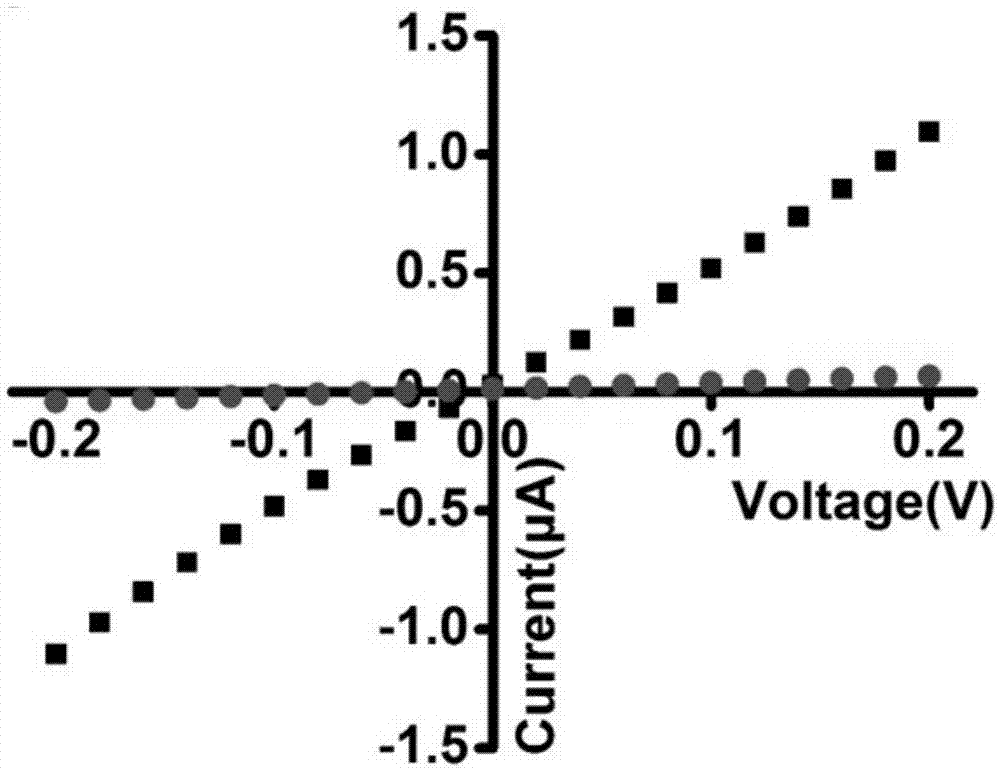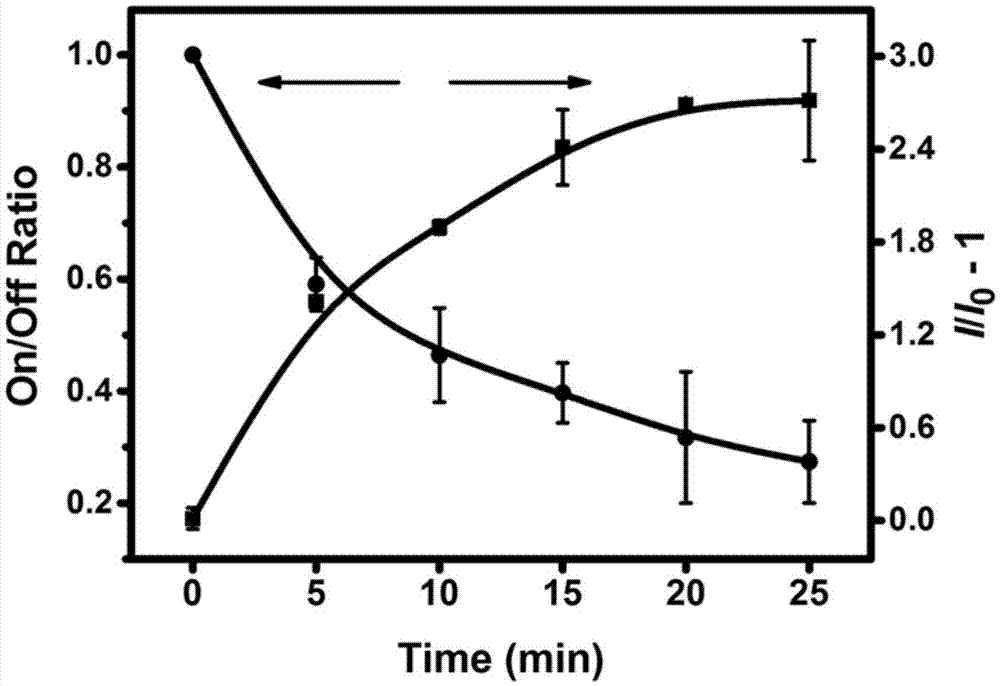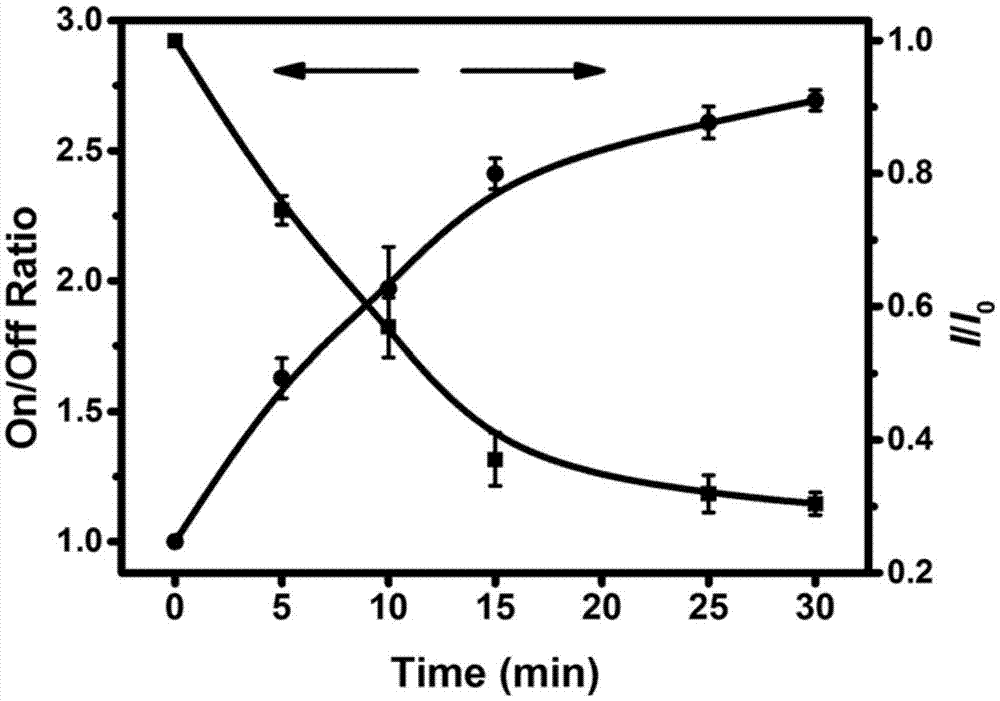Method for detecting components in liquid
A detection method and liquid technology, applied in the direction of measuring devices, analysis materials, material excitation analysis, etc., can solve the problems of complicated sample preparation process and inability to eliminate interference, and achieve the effect of saving experimental materials and low detection limit
- Summary
- Abstract
- Description
- Claims
- Application Information
AI Technical Summary
Problems solved by technology
Method used
Image
Examples
Embodiment 1
[0041] (1) Take a piece of Au atom-bombarded track with an average density of 5×10 7 piece / cm 2 , a PET (polyethylene terephthalate) film with a thickness of 12 μm was irradiated under a 365-nm ultraviolet lamp for 30 minutes on the front and back, and then soaked in a 2M NaOH solution at 50 ° C for 5 minutes, and the Au atoms The bombarded sneak tracks were etched to a depth of 12 μm, a diameter of 30 nm, and a density of 5 × 10 7 / cm 2 A cylindrical channel that runs through the film, and after modifying p-aminophenylboronic acid in the nanopore, the surface of the channel has boric acid groups.
[0042] (2) Immerse this PET film in 4mM glucose solution, add 50 μ M TPEDB (two boronic acid groups modify tetraphenylethylene), the chemical structural formula of TPEDB is The transmembrane voltage after reaction at 25°C for 20 minutes is as follows: Figure 1a As shown (the specific conditions for voltage detection are: sandwich the PET film in the middle of the tank where e...
Embodiment 2
[0049] Repeat Example 1 with the same steps described, it is characterized in that, the concentration of glucose is respectively 4 * 10 -1 nM, 4nM, 4×10nM, 4×10 2 nM, 4×10 3 nM, 4×10 4 nM, 4×10 5 nM and 4×10 6 nM, the reaction time is 20min, the obtained concentration-current reduction rate detection curve is as follows Figure 2a As shown, the concentration-fluorescence detection curve is as Figure 2b It can be seen that in the case of the same reaction time, the higher the glucose concentration, the more the current decreases, and the greater the fluorescence value. Fluorescence detection can reach 4×10 -10 mol / L detection limit.
Embodiment 3
[0051] Repeat embodiment 1 with described identical steps, it is characterized in that, get supernatant after urine sample (taking patient's urine sample 1mL earlier at the rotating speed of 800rap / s for 3min, supernatant is again in 12000rap / s) s speed of centrifugation for 20min and then take the supernatant) to replace the glucose solution, the current reduction curve obtained after the reaction for 20min is as follows image 3 As shown, ND is non-diabetic urine sample, DM (before) is the urine sample of diabetic patient before treatment, and DM (after) is the urine sample of diabetic patient after treatment. It can be seen that the urine sample of diabetic patient after treatment and glucose concentrations in non-diabetic urine samples were significantly higher than in pre-treatment urine samples from diabetic patients.
PUM
| Property | Measurement | Unit |
|---|---|---|
| Thickness | aaaaa | aaaaa |
| Diameter | aaaaa | aaaaa |
| Average density | aaaaa | aaaaa |
Abstract
Description
Claims
Application Information
 Login to View More
Login to View More - R&D
- Intellectual Property
- Life Sciences
- Materials
- Tech Scout
- Unparalleled Data Quality
- Higher Quality Content
- 60% Fewer Hallucinations
Browse by: Latest US Patents, China's latest patents, Technical Efficacy Thesaurus, Application Domain, Technology Topic, Popular Technical Reports.
© 2025 PatSnap. All rights reserved.Legal|Privacy policy|Modern Slavery Act Transparency Statement|Sitemap|About US| Contact US: help@patsnap.com



